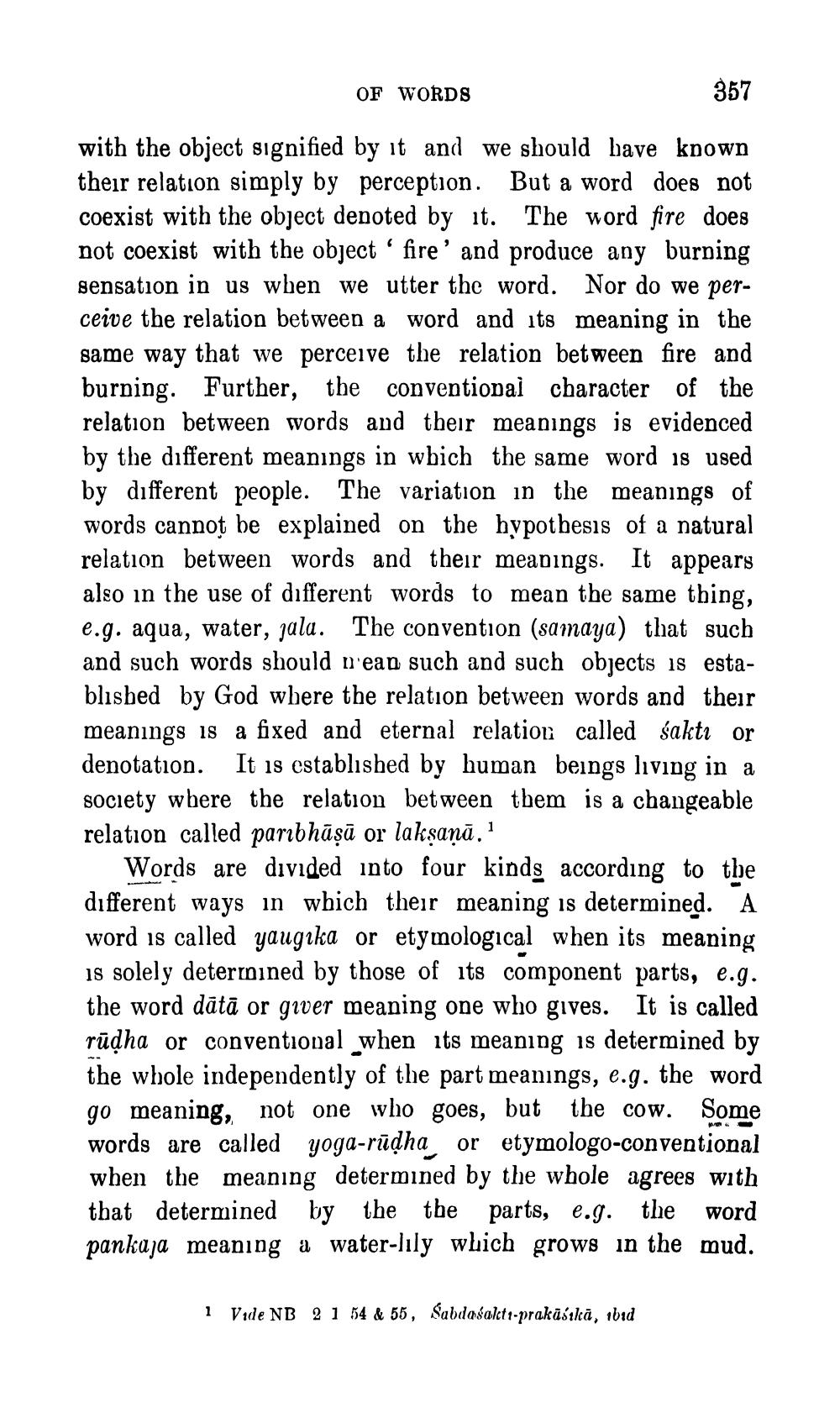________________
357
6
with the object signified by it and we should have known their relation simply by perception. But a word does not coexist with the object denoted by it. The word fire does not coexist with the object fire' and produce any burning sensation in us when we utter the word. Nor do we perceive the relation between a word and its meaning in the same way that we perceive the relation between fire and burning. Further, the conventional character of the relation between words and their meanings is evidenced by the different meanings in which the same word is used by different people. The variation in the meanings of words cannot be explained on the hypothesis of a natural relation between words and their meanings. It appears also in the use of different words to mean the same thing, e.g. aqua, water, jala. The convention (samaya) that such and such words should mean such and such objects is established by God where the relation between words and their meanings is a fixed and eternal relation called saktı or denotation. It is established by human beings living in a society where the relation between them is a changeable relation called paribhāṣā or lakṣaṇā.1
Words are divided into four kinds according to the different ways in which their meaning is determined. A word is called yaugika or etymological when its meaning is solely determined by those of its component parts, e.g. the word dātā or giver meaning one who gives. It is called rūḍha or conventional when its meaning is determined by the whole independently of the part meanings, e.g. the word go meaning, not one who goes, but the cow. Some words are called yoga-ruḍha or etymologo-conventional when the meaning determined by the whole agrees with that determined by the the parts, e.g. the word pankaja meaning a water-lily which grows in the mud.
OF WORDS
1 Vide NB 2 1 54 & 55, Sabdaśakti-prakāśikā, ibid




